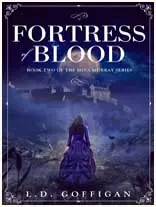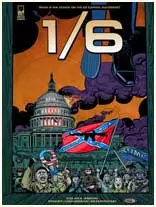10 Best Ideas for Writing Children’s Books 2024

Any children book writing my look like an easy job, but in fact, it is a job worthy of creativity, good knowledge, and commitment. Children are wise readers who are able to select and absorb as much information from whatever they read. Therefore, building an adventurous narrative requires a significant focus on characters, wording, and how events develop. For your easier understanding on the available children book, here are ten best ideas to capture the attention of your audience through the story.
10+ Great Children’s Book Ideas What To Write About
1- A Modern Fantasy Story of Transformation
This is where you build on the magical forest by describing the magical trees, flowers, and other plants; also the special powers of the creatures dwelling in the forest. Small cog could go on a journey where they all learn and then apply those lessons in order to save the forest from a pending danger.
2- History Through Adventure
As the group of friends moves through history, come up with a master mission for the whole group. About history they were also gathering the evidence or some relics that in the end allow them to solve a present day mystery or to avert a tragedy in the contemporary world.
3- A Tiny World with Big Lessons
If the child was to walk through the insect world, then the tasks which he/she is likely to encounter may include; having to look for lost friends or fighting for their territories. While going through the activities, the child gets to understand the behavior of insects, their role in the ecosystem and the impacts of mankind’s actions on their existence.
4- Friendship Beyond Earth’s Boundary
One of the areas that could be developed to qualify the story is the theme of the confrontation and non-recognition of the alien and the child. They could go on an endeavor with the alien to bring him back to where he came from, while at the same time educating the society on tolerance and the need to accept the different.
5- Dream Big, Adventure Bigger
Explain different dream worlds that child goes through and what happens to the child in each dream world. Introduce The child with problems or situations that he or she has to solve in dreams, this assists the child to gain confidence, persistency and even be creative in waking life.
6- Unleash the power of Science
Create separate missions for the squad with all the missions relying on particular discipline such as chemistry, physics or biology. They understand that while completing each mission, the team deals with teamwork lessons, problem-solving skills, and the practical use of science in daily life.
7- Spread kindness one act at a Time
Pamphlet on different activities that the club carries out as well as the effects of the actions in the community. Introduce obstacles that members face, for example, they encounter negative remarks or phrases, they have to cope with refusal to be kind or empathetic, thus, increasing the desire to perform acts of kindness and compassion.
8- Emotions Step by Step
Explicate other kinds of terrains that the main character experiences, describing each of them as a particular feeling. Thus, through communication with personified emotions and overcoming different tasks, the child receives necessary info about the world and significant strategies of carrying out actions, as well as the necessity of maintaining the balance of emotions and being aware of one’s feelings.
9- Innovation and Imagination Let Loose
Describe how the protagonist develops ideas for inventions, their achievements and setbacks, and the way inventions affect people’s lives. Add conflict that will engage the inventive mind of the young inventor, for instance some competition, or an important problem in the society.
10- Research The Forgotten History
If the child was walking around the island, they may find different lost narratives, and bring all the broken fragments from different cultures and different eras together. Thus, they develop their understanding of human values and the message that unites people, as well as the meaning of the concern for cultural and historical identity.
Below are the principles that would turn out to be worthwhile to use and are effective in literary work.
Engaging Storytelling
So, if one has mastered the way of telling a good story, one can encourage the readers’ imagination and plunge them into a world of marvel. In order to have an interesting plot in a story one has to have a kind of sequence in the story that one can classify a beginning, middle and an end. This requires one to reverse the flow, come up with games in the writings so that the readers do not follow a straightjacket pattern on what is being offered, rather they look forward to what is coming next. However, if some aspects of comedy, adventures, or mystery are included, it helps the story become more interesting.
Some of the most unforgettable characters In literature and some of the most prevalent truths to man’s conditions are presented in this novel.
German import The Secret of the Barn Door was a more serious children’s book, which also benefited from the creation of easily memorable characters. Create original and multiple faceted characters that the children can easily learn from and be able to identify with. Create strong and weak points for a character to make him or her different from the others and promote the experience of changes. Selecting and depicting subjects that are pertinent in a child’s life, like friendship, courage, and empathy, can also solve topics on diversity and bring in the understanding of its importance.
Vibrant Illustrations
It becomes important to analyze the illustrations as they preserve an important mission of appealing to the imagination of the reader and enriching the text. For the selection of the type of illustrations in the story the following aspects are important: age of the reader, target audience, the general mood and the context in which the book is to be placed. You should team up with an illustrator that you can briefly explain your vision/story and who can correctly interpret it and make awesome drawings. Consciously build this rapport so that you and the illustrator are on the same page and there is little room for inconsistency between the text and illustrations.
Age-Appropriate Language
The use of simple and plain language is crucial as the target audience mostly consists of young people. Select vocabulary that can be easily understood by the common person in the society and keep the sentences and structures used as simple as possible so that they do not make people get irritated. Make the language more informal and write as if directly talking to the reader to add more dynamics to the story and the use of dialogues.
Promoting As Curiosity and Critical Thinking
Questions spread within the narrative force the reader to ponder over the narrative and its themes and events. This can lead to brainstorming or simply further dialogue opening a discussion about the story and the happenings in it. It thus can quite prove useful to introduce ideas or concepts, which may make the readers learn something new and at the same time, enables them solve problems and or think critically.
Building A Good Read Environment
This is why it is recommended that the choice of the books to read be fanatically by good books, which have a good outlook to them. Format the content systematically, concerning such aspects as orientations, font and design factors in an effort to conform to balance, coherency and relative ease in finding information in the book. The main focus of brand building is, therefore, to develop an emotional bond with their target consumers so that their stories are very compelling. Tug the heartstrings of the audiences and readers by either narrations or illustrations and ensure that the characters and contexts set are relevant to the target readers.
Ways of Developing Successful Children’s Books Making Children’s Books In Perfect Harmony
Engaging And Memorable Storylines
Second, when coming up with interesting characters and the plot that has something to do with readers’ lives, you can offer young readers a nice story with heroes, who are not stereotypes.
The Art Of Using Bright Colors in Illustrations
Illustrating these stories brightens makes it easier for the reader to digest the story while stimulating their imagination, to depict the story in their mind.
Use of Appropriate Language and Conversation Pattern
Adopting simple language makes the story appealing to readers of all ages also because use of age appropriate language in the story Compartmentalized makes the language used in the story easily understandable.
The Positive And Negative Effects Of Curiosity and Critical Thinking
Appealing to curiosity and rationale within the plot educates the audience about the themes of the story and motivates them to think and discuss in order to enhance the experience.
Deepening a Positive Environment to Support Reading
Furthermore, when developing a children’s book, there are various positive experiences children hope to gain when reading the book such as improving their self-confidence.
Building up Educational Motivation via Storytelling
One way in which an interest in books has been instilled in children and assisted them build up knowledge though reading is by association of reading with storytelling.
About the Nature of Interest Children’s Books
In other words, creating an unforgettable and inspiring children’s book is firstly about creating an enthralling character and fantastic plot of a book, beautiful and vivid illustrations on its front cover, correct and lively language used in the book, and important and interesting ideas which can help children to become more curious and think deeper.
Set Off On A Journey That Is Both Challenging And Still Fulfils Your Loved Ones
When you are starting this worthwhile, and most fulfilling activity of writing for children, let your spirit rise and rejoice because what you are writing has the potential of molding the young generation and make them better citizens of the world.
limited Time offer
- 00
- 00
- 2





